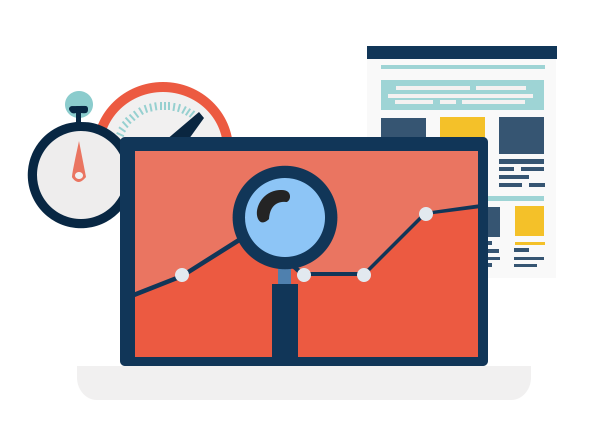Revisiting Courses, Books and Personalities on Conversion Rate Optimization : Insights and Reviews

Way back in 2009, I was privileged enough to be flown to Jacksonville, Florida, to attend the Marketing Experiments Landing Page optimization course. It was a 3-day event attended by roughly 200 people from different disciplines but mostly online marketing, which was still in its infancy. So I was not expecting too much. I was just excited to be flown in by my company, from the Philippines to the U.S. The course was good and the networking even better though I did not capitalize on networking too much. This is probably due to the jet lag from the arduous 8 hr flight from Los Angeles to Jacksonville.
It was unclear whether landing page optimization was a bastardized child of conversion rate optimization and user experience. Books like “Landing Page Optimization” by Time Ash were already gaining popularity though I found it too wordy. The classic book “Call to Action” by the Eisenbergs was then and is still now considered one of the bibles for conversion rate optimization. What was engaging with Eisenberg’s book was that it was easy to read and was not technical. Books that are too technical tend to alienate some readers, especially those who are just getting started. This book was not one of them. Instead, the book reinforced the need to understand the fundamentals with its exploration of AIDA. AIDA is an acronym widely used by marketers to reference how to compel prospects to either buy or engage in a specific product or service. AIDA stood for Attract, Interest, Desire, and Action.
Another interesting book that might have been ahead of its time was Steve Krug’s “Don’t Make Me Think.” For a short 201 page book, it packed a lot of actionable takeaways and had wit. In addition, the before and after style of comparing results was an eye-opener on how best to present case studies. Not surprising that the book is sold out on Amazon, even a decade later.
These books and personalities continue to inspire me to revisit this discipline. I have focused on paid ads account management for the last decade and have dabbled into other marketing channels. However, regardless of which marketing channel you use for client acquisition, they all end up into a version of a landing page where the most important metric is conversion rate. The advent of transactions staying within social media platforms where the traditional landing page is not needed and replaced by a mere post. The fundamental approach to optimizing to improve conversion rates has remained core to the performance of the campaigns.
Years later, I got to explore CXL Institute’s mini degree on conversion rate optimization, which surprisingly is very well structured though the audio might need some improvement on some videos. The initial 6 lessons alone were loaded with insights I did not encounter from my previous studies on conversion rate optimization. Let me share some recap and insights on the initial 6 lessons.
Lesson 1 was aptly named “Why CRO?.” Sounds like a cliché, huh? It starts with an introduction and defining what conversion rate optimization (CRO) is and what it covers. Fair enough. I understand that the first lesson always starts with identifying and answering some of the obvious questions, but that’s how it is. Not only does it address the basic definition of conversion rate optimization (CRO), but it also triggers curiosity into what awaits. I did not expect an 8-minute video to impact, reigniting my interest in conversion rate optimization – again.
Lesson 2 discussed the basics. Ideas are a dime a dozen, and it is frequently the catalyst to exploring new frontiers. Generating ideas is one thing but organizing them is another thing. This lesson talks about the importance of velocity and momentum in planning and running a test. While listening to the video, you will notice the importance given to the value of ideas. It treats ideas as a currency. It is not every day you will hear that perspective. Organizations have great ideas, but they need to collate and assess them to impact the group’s performance, always taking precedence. The notion that each individual is innately a natural behavioral scientist was thought-provoking and accurate.
The accessibility and availability of various testing tools and their plug-and-play interface make running various split tests easier. However, this ease of use has its downside as marketers tend to forget about the fundamentals of computing for proper sample size, an often overlooked component of running a test. Managing ideas. Sounds simple but often challenge for creatives and marketer alike.
The next lesson was outright intriguing as it dwells further into managing ideas. Again, identifying ideas as the “lifeblood of a scientist” was well placed, and I have to admit, put a smile on my face. Ideas need to be shaped into a form that can later be harvested and used. That alone is brilliant.
This part of the lesson encourages the listener to explore and expand on the ideas generated. It encourages the need for research and to experience the grind associated with managing the expanding those ideas.
Lesson 4 starts where lesson 3 ends. This lesson emphasizes on structure and specifically on how to structure your ideas. So earlier, the previous lesson taught about managing your ideas and not it moves toward structuring them. At this point, I was completely sold on the value this course will bring to my career and our local community of marketers, experimenters, and startups.
This lesson also touched on the need for personas when starting a marketing campaign. I could not agree more. Early this week, while running discovery calls, I noticed that the personas identified by our research group were nowhere near those provided by the client. The incident shed light on the misalignment between internal teams and the danger of creating the wrong persona/profile for your client’s business. This type of misalignment can cost the client a fortune. Imagine spending millions of dollars targeting the wrong audience.
The last lesson stoked me, thiss was about A/B testing. This reminded me again of the book written the Eisenbergs on “Always Be Testing.” Beyond the need to test campaigns, the culture of testing should be advocated, as this is an excellent exercise to generate new ideas within the organization.
I did not expect the first 6 lessons to be loaded with really good insights. Good thing is, that its just getting started.


